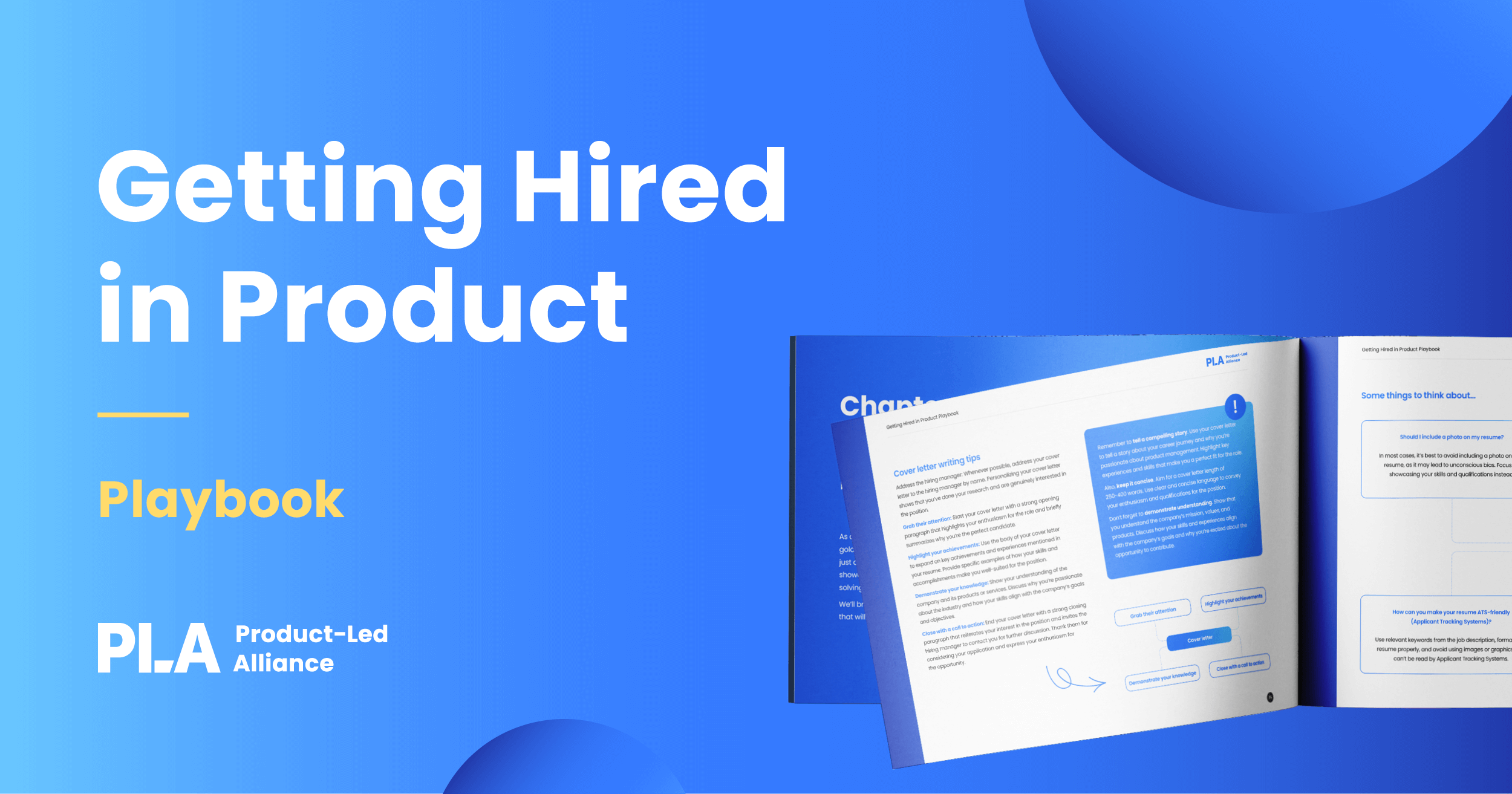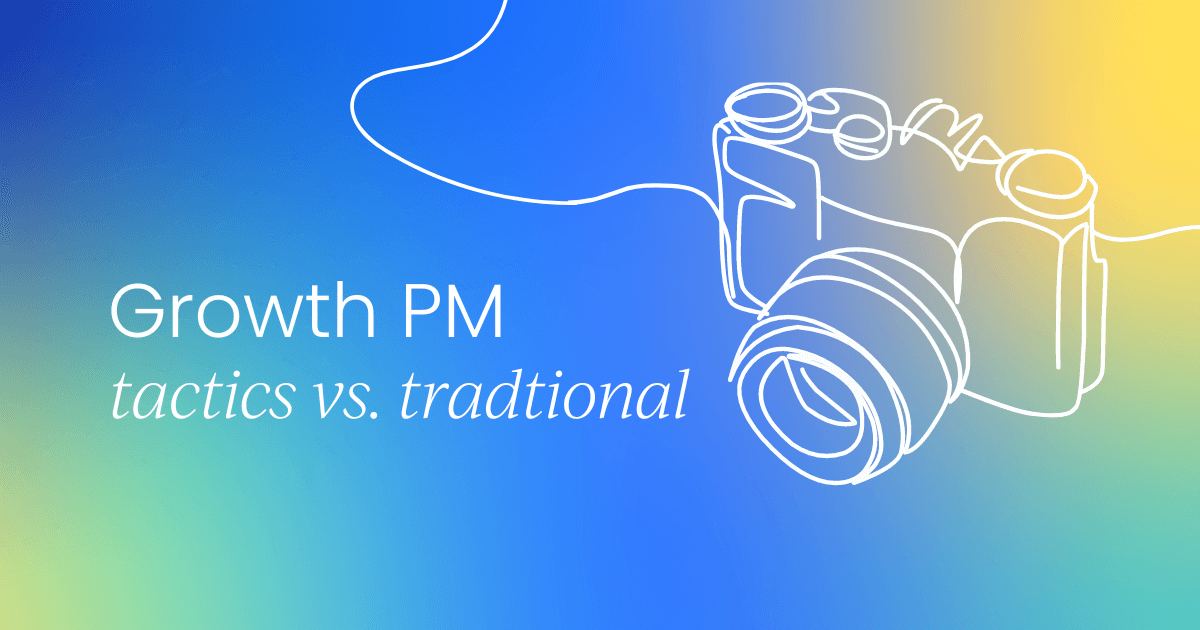Understanding the difference between traditional product management and growth product management is crucial but often unclear. While traditional product management focuses on creating or improving value for users, growth product management is about connecting more people to the existing value of the product.
What is traditional product management?
Traditional product management typically involves working on the core product, focusing on building features, solving user pain points, and improving the overall experience. The goal is to ensure the product continually delivers value and evolves to meet users' needs.
What is growth product management?
In contrast, growth product management centers around scaling and expanding the product’s user base. Growth Product Managers (GPMs) don’t build the core product but rather focus on optimizing it for new user acquisition, retention, and distribution. Their responsibilities include unlocking resources, identifying growth opportunities, and launching experiments to measure impact.
Growth vs. traditional PM in startups
In early-stage startups, the lines between traditional and growth product management blur. You may need to build the core product while also driving user growth simultaneously. This is why it’s essential for startups to adopt a fluid approach to product management, dipping into both traditional and growth strategies.
To visualize this, think of product management responsibilities on two axes:
- Growth: Fast-paced activities that focus on expanding the user base, such as marketing, SEO, and conversion optimization.
- Maintenance/infrastructure: More static, long-term projects, like bug fixes, backend engineering, and product redesigns.
Most companies realize they need a balance between these extremes to succeed.
Common challenges in growth product management
Growth PMs face unique challenges that traditional product managers may not encounter. Two common hurdles are:
- How to unlock resources and scale the team: Growth PMs need to demonstrate potential impact to gain more resources.
- How to define output: Unlike traditional PMs with clear scopes, growth PMs often work across teams, making it difficult to define measurable output.
The key to solving these challenges is to demonstrate impact effectively. A useful formula for this is:
Impact = T.A.X.S. (Team size × Average impact × Experiment cadence × Success rate)
Let’s break it down:
- Team size and impact: You need to show leadership how adding resources will directly contribute to the company’s growth goals.
- Experiment cadence: Set a target, such as rolling out one experiment per week, to create a productive, data-driven environment.
- Success rate: Ensure your experiments are well-designed and tied to measurable hypotheses to maximize success.
How to track and measure growth impact
Growth PMs rely on experimentation, but tracking results can be tricky. Here’s how to effectively track early indicators of success:
- Granular marketing efforts: Identify gaps in your marketing channels, such as missing SEO strategies or underutilized content marketing. Map out experiments and present them to leadership with clear expectations of impact.
- Target audience precision: When launching small features or experiments, carefully define and target your audience. If your feature isn’t visible to the right users, results will be skewed, leading to poor data.
- Early success indicators: Track metrics like click-through rates, session recordings, and conversion rates to gauge early signs of success. For example, a 50% click-through rate on a visible pop-up is a strong indicator of a positive experiment.
Tips for optimizing your growth strategies
Here are some tips for maintaining a high growth velocity while optimizing your strategies:
- Collaborate with stakeholders: Involve key team members to brainstorm and prioritize growth experiments.
- Prioritize effectively: Use a traditional effort vs. impact matrix to prioritize high-impact, low-effort projects first.
- Focus on data: Collect evidence from early experiments and adjust your strategy based on real data.
The benefit of growth positioning strategy
Using the T.A.X.S. formula helps you create a more actionable plan for driving product growth. Once you’ve defined your potential impact, you can present these findings to leadership to secure more resources and scale the team effectively.
Start from the ground up
Growth product management is a collaborative process. To grow your product, identify the basic levers that will drive traffic and increase users. For example:
- Supply-side growth: In marketplaces, growing your supply will naturally bring in more traffic. Ask, "What can I do to grow the supply?"
- Traffic growth: Similarly, focus on increasing traffic through missing or underutilized marketing channels, such as SEO or social media.
Track early indicators and adjust
Sometimes, the results of your growth experiments won’t be immediately clear. To stay agile, monitor early indicators, such as session recordings or A/B test results, to make data-backed decisions quickly. For example, if your target audience isn’t engaging with a new feature, pivot fast rather than waiting for weeks of data.
Work at it
Driving growth is hard work. The best growth product managers balance fast-paced experimentation with strategic thinking. They maintain a bird's-eye view of their product strategy while generating fresh ideas and leveraging data to prioritize projects.
Conclusion
Growth product management requires a unique blend of creativity, data-driven decision-making, and collaboration. By focusing on experimentation, leveraging your team’s resources, and constantly optimizing your approach, you’ll be well-equipped to drive significant growth for your product.
The job market is competitive, but you can stand out. Whether you're starting your career, recently laid off, or seeking a better opportunity, your Getting Hired in Product playbook is designed to guide you every step of the way.
From understanding product roles to negotiating your job offer, this playbook has got your back.
Sign up to get the playbook now.




 Follow us on LinkedIn
Follow us on LinkedIn




